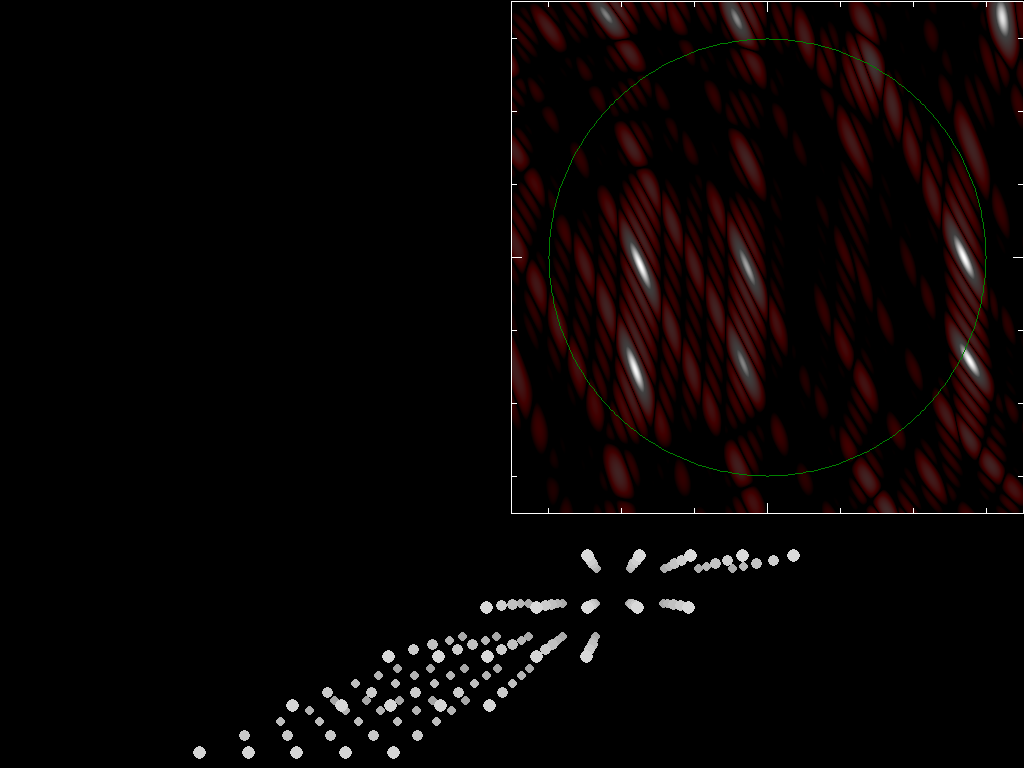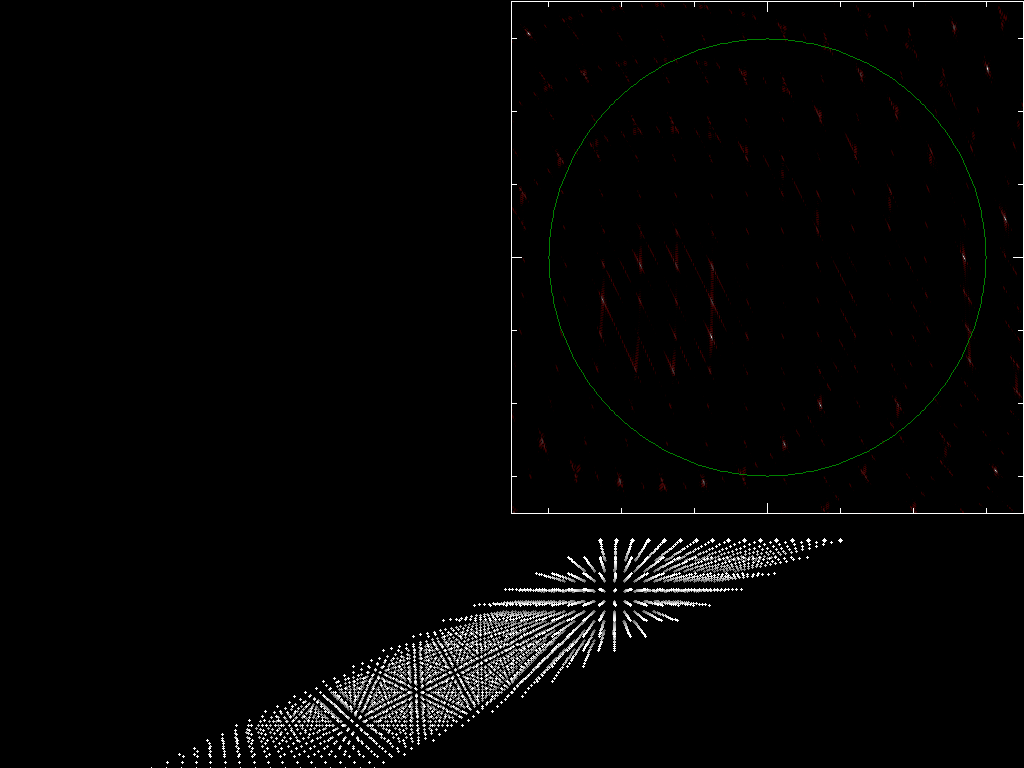|
Size: 1147
Comment:
|
← Revision 17 as of 2022-03-15 01:37:15 ⇥
Size: 1395
Comment:
|
| Deletions are marked like this. | Additions are marked like this. |
| Line 19: | Line 19: |
| == 5x5x5 array == | == 5x5x5 skewed, dithered array == {{ attachment:a4d21.png | | height=768 }} Annotated version with explanation coming soon. |
| Line 22: | Line 26: |
| == 16x16x16 skewed, dithered array == | |
| Line 23: | Line 28: |
| {{ attachment:a4d21-16.png | | height=768 }} | |
| Line 24: | Line 30: |
| MORE LATER | Annotated version with explanation coming soon. MoreLater |
Array Phasing
When we randomly dither the position of the emitters in a 3 dimensional phased array, it smears out the grating lobes. I am looking for a better function.
A position dither function to try:
D = L/2 |
k = 2 \pi / N * L |
||||
\Delta x = D * ( \sin( k z ) + \cos( k y ) ) |
|
\Delta y = D * ( \sin( k x ) + \cos( k z ) ) |
|
\Delta z = D * ( \sin( k y ) + \cos( k x ) ) |
|
... or some variation of that ( I originally tried D = \lambda/2 , with little effect). This assumes the spacing L >> \lambda , a sparse array, so that the antennas do not couple (much). Try scaling D and k, and also modifying amplitudes across the array like a Hamming window, and see how that changes the sidelobes.
This happens on top of the array of perhaps hundreds of emitters on the thinsat itself, which beamforms to a few degrees of angle, reducing power splattered far from the target.
The signal is broadband, so there is not a well defined \lambda . We may end up making k a function of x, y, and z as well.
5x5x5 skewed, dithered array

Annotated version with explanation coming soon.
16x16x16 skewed, dithered array

Annotated version with explanation coming soon.
